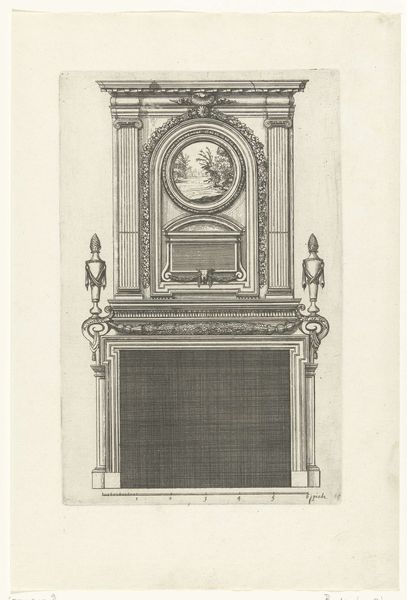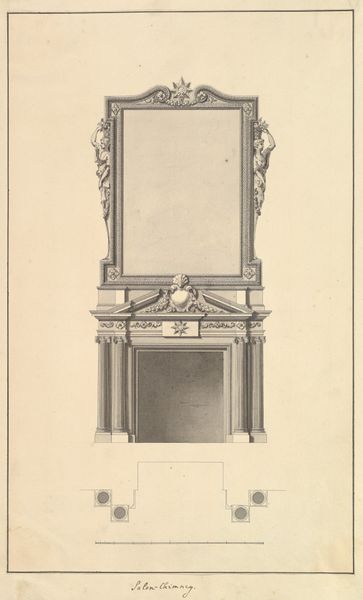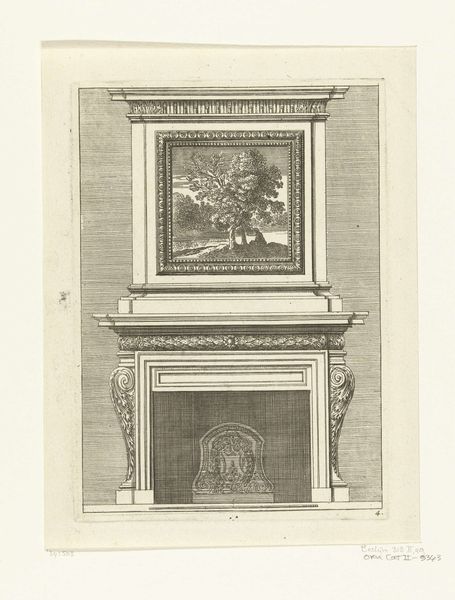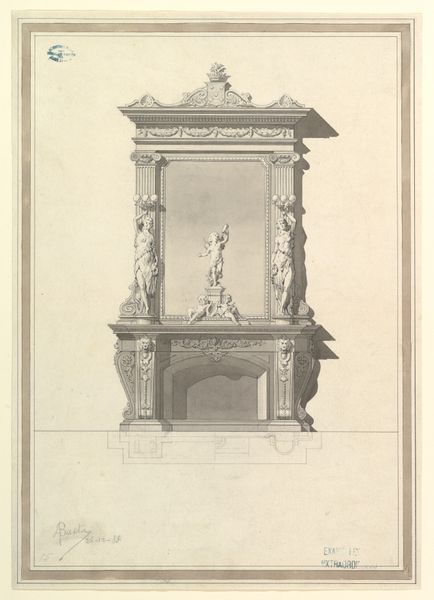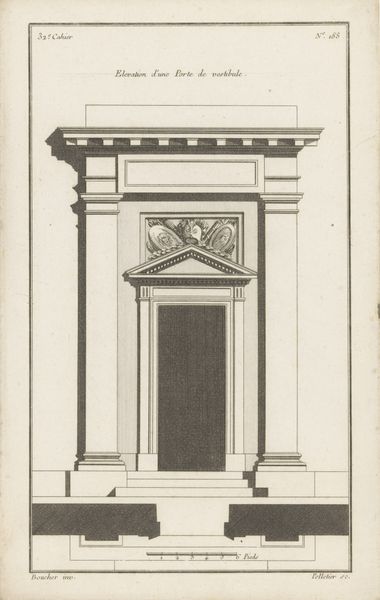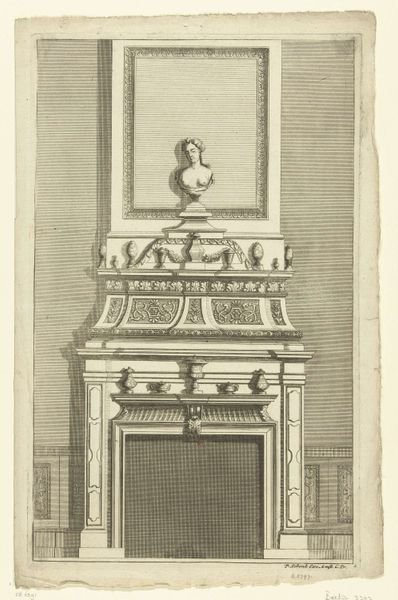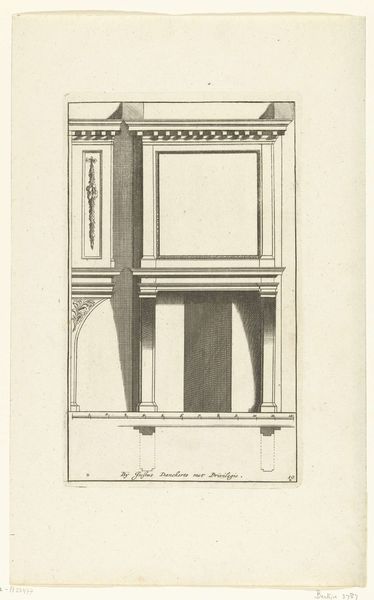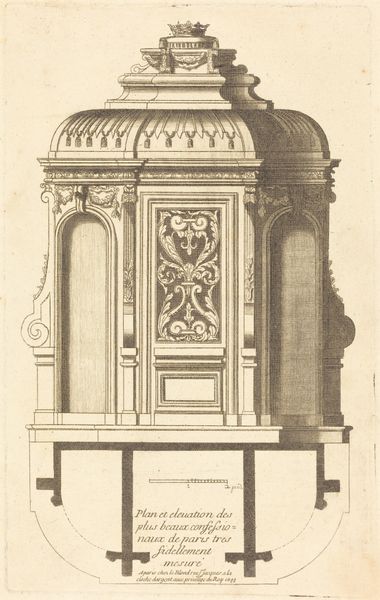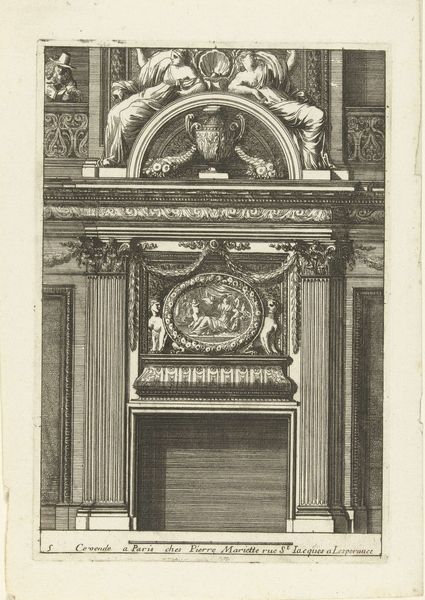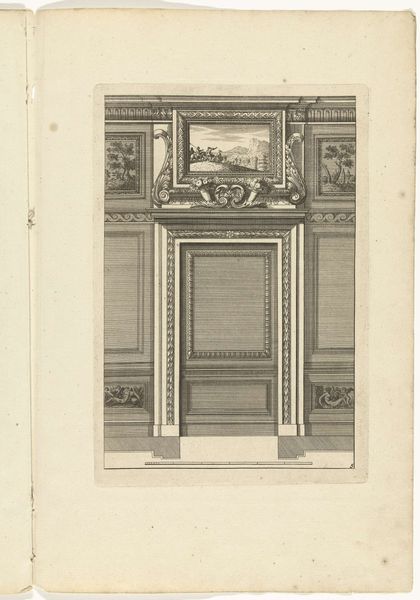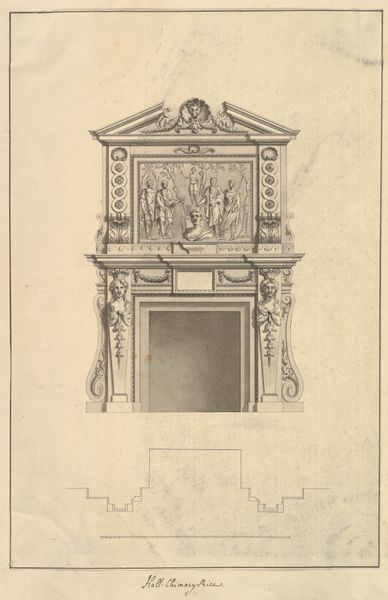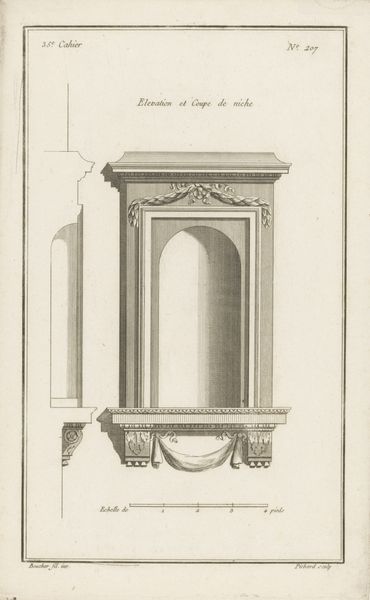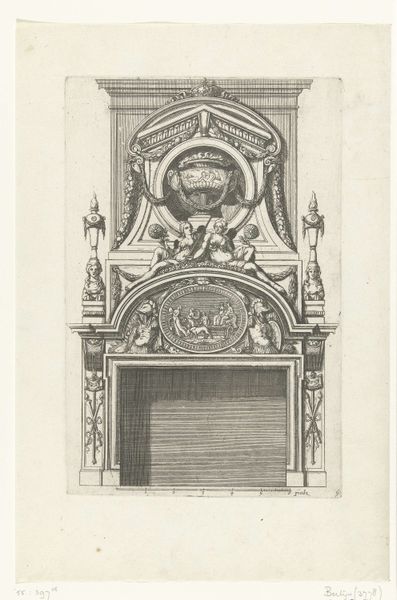
drawing, print, engraving, architecture
#
portrait
#
drawing
#
baroque
# print
#
geometric
#
line
#
engraving
#
architecture
Dimensions: height 193 mm, width 139 mm
Copyright: Rijks Museum: Open Domain
Curator: This meticulously rendered print, titled "Onderboezem met portretmedaillon," translates to "Chimneypiece with portrait medallion," and it dates back to around 1710. The artist is Jean Lepautre. Editor: My first thought is just how architectural this print is! It has such defined lines, an almost uncanny sense of precision given its age, really highlighting the labor of the hand. Curator: Indeed, Lepautre was renowned for architectural engravings. It provides a window into the 18th-century obsession with detail, ornamentation, and of course, the societal role of the fireplace. It wasn't just a heat source; it was a focal point, laden with symbolism. Editor: Exactly. The fireplace was very much at the center of the home's social and material life. Considering this engraving would likely have been used by artisans, it illuminates not just design, but the larger craft and material culture of the period. It really shows you the kind of labor involved. Curator: The portrait medallion too—likely depicting a ruler or notable figure— speaks volumes about power, lineage, and the desire to visually represent and legitimize social standing through interior design. Editor: The repetitive geometric and botanical elements...it almost seems like an assembly line. These are clearly standardized, repeatable forms, intended to be consumed and replicated widely, which makes it incredibly revealing. It's an artifact of the burgeoning consumer culture of the time, presented here in what was ostensibly the "craft" realm. Curator: Yes! And consider the print itself as a commodity, a tool in disseminating design trends. Lepautre’s work wasn't just art; it was instrumental in shaping tastes and solidifying class structures by illustrating and therefore democratizing luxury. Editor: Fascinating how this detailed illustration gives us insight into both production practices, interior design as an active expression of power, as well as a portrait of shifting class relations! Curator: Absolutely! There are so many layers here to consider. Editor: I agree. I'll certainly think twice about how design elements reveal so much.
Comments
No comments
Be the first to comment and join the conversation on the ultimate creative platform.
